
Captain Robert Falcon Scott was a British Royal Navy officer and explorer who led two expeditions to the Antarctic regions: the Discovery expedition of 1901–04 and the Terra Nova expedition of 1910–13.

Edward Adrian Wilson was an English polar explorer, ornithologist, natural historian, physician and artist.

Apsley George Benet Cherry-Garrard was an English explorer of Antarctica. He was a member of the Terra Nova expedition and is acclaimed for his 1922 account of this expedition, The Worst Journey in the World.

Thomas Crean was an Irish seaman and Antarctic explorer who was awarded the Albert Medal for Lifesaving (AM).
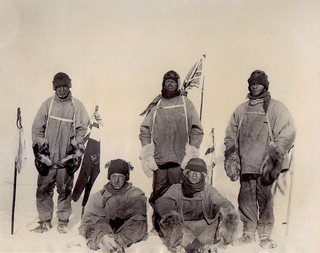
Henry Robertson Bowers was one of Robert Falcon Scott's polar party on the ill-fated Terra Nova expedition of 1910–1913, all of whom died during their return from the South Pole.

Admiral Edward Ratcliffe Garth Russell Evans, 1st Baron Mountevans, was a Royal Navy officer and Antarctic explorer.

William Lashly was a Royal Navy seaman who served as lead stoker on both the Discovery expedition and the Terra Nova expedition to Antarctica, for which he was awarded the Polar Medal. Lashly was also recognised with the Albert Medal for playing a key role in saving the life of a comrade on the second of the two expeditions.

Scott's Hut is a building located on the north shore of Cape Evans on Ross Island in Antarctica. It was erected in 1911 by the British Antarctic Expedition of 1910–1913 led by Robert Falcon Scott.

The Terra NovaExpedition, officially the British Antarctic Expedition, was an expedition to Antarctica which took place between 1910 and 1913. Led by Captain Robert Falcon Scott, the expedition had various scientific and geographical objectives. Scott wished to continue the scientific work that he had begun when leading the Discovery Expedition from 1901 to 1904, and wanted to be the first to reach the geographic South Pole.

Herbert George Ponting, FRGS was a professional photographer. He is best known as the expedition photographer and cinematographer for Robert Falcon Scott's Terra Nova Expedition to the Ross Sea and South Pole (1910–1913). In this role, he captured some of the most enduring images of the Heroic Age of Antarctic Exploration.
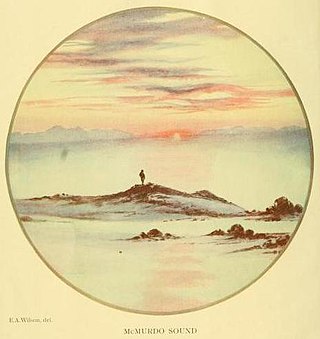
The Worst Journey in the World is a 1922 memoir by Apsley Cherry-Garrard of Robert Falcon Scott's Terra Nova expedition to the South Pole in 1910–1913. It has earned wide praise for its frank treatment of the difficulties of the expedition, the causes of its disastrous outcome, and the meaning of human suffering under extreme conditions.
Victor Lindsey Arbuthnot Campbell was an English Royal Navy officer and Antarctic explorer.
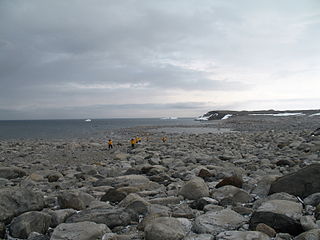
Inexpressible Island is a small, rocky island in Terra Nova Bay, Victoria Land, Antarctica. Previously uninhabited, the Chinese Qinling research station on the southern edge of the island became operational in 2024.
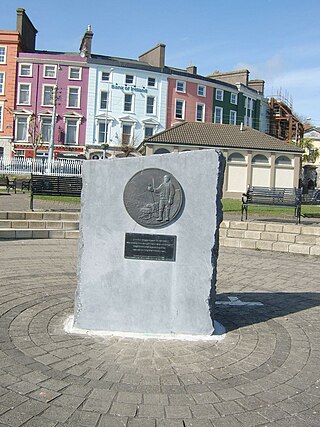
Robert Forde was an Antarctic explorer and member of the Terra Nova Expedition under Captain Robert Falcon Scott from 1910–1912.
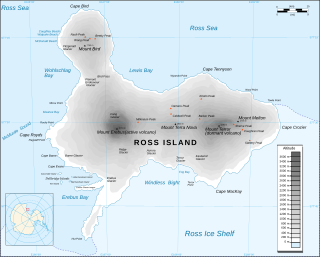
Cape Crozier is the most easterly point of Ross Island in Antarctica. It was discovered in 1841 during James Clark Ross's polar expedition of 1839 to 1843 with HMS Erebus and HMS Terror, and was named after Commander Francis Crozier, captain of HMS Terror, one of the two ships of Ross' expedition.
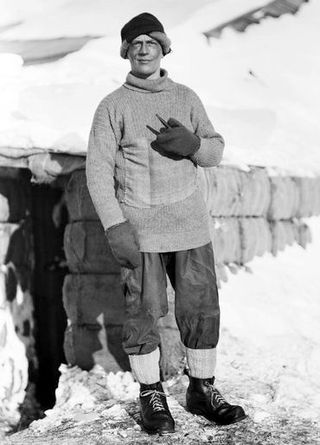
Edward Leicester Atkinson, was a Royal Navy surgeon and Antarctic explorer who was a member of the scientific staff of Captain Scott's Terra Nova Expedition, 1910–13. He was in command of the expedition's base at Cape Evans for much of 1912, and led the party which found the tent containing the bodies of Scott, "Birdie" Bowers and Edward Wilson. Atkinson was subsequently associated with two controversies: that relating to Scott's orders concerning the use of dogs, and that relating to the possible incidence of scurvy in the polar party. He is commemorated by the Atkinson Cliffs on the northern coast of Victoria Land, Antarctica, at 71°18′S168°55′E.

Between December 1911 and January 1912, both Roald Amundsen and Robert Falcon Scott reached the South Pole within five weeks of each other. But while Scott and his four companions died on the return journey, Amundsen's party managed to reach the geographic south pole first and subsequently return to their base camp at Framheim without loss of human life, suggesting that they were better prepared for the expedition. The contrasting fates of the two teams seeking the same prize at the same time invites comparison.
The Worst Journey in the World is a 2007 BBC Television docudrama based on the memoir of the same name by polar explorer Apsley Cherry-Garrard. Narrator Barry Letts, best known for his tenure as the producer of Doctor Who, played Cherry-Garrard in the 1948 film Scott of the Antarctic.

The British Antarctic explorer Robert Falcon Scott became the subject of controversy when, more than 60 years after his death on the return march from the South Pole in 1912, his achievements and character came under sustained attack.
Frank V. Browning (1882–1930) was a native of Devonshire and explorer of Antarctica. He was part of the Terra Nova Expedition of 1910–1913. In this service he was one of the castaways of the Northern Party that was marooned overwinter on Victoria Land in 1912.



















